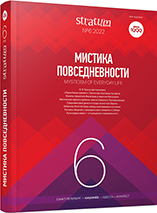Монеты как хронологический индикатор Приладожской курганной культуры
Coins as a Chronological Indicator of the Ladoga Kurgan Culture
Author(s): Svetlana Ivanovna KochkurkinaSubject(s): History, Archaeology, 6th to 12th Centuries
Published by: Издательский дом Stratum, Университет «Высшая антропологическая школа»
Keywords: Karelia; Leningrad Oblast; kurgans of the 10th—11th centuries; Eastern; Western European silver coins; dating of burials;
Summary/Abstract: The area of the Kurgan culture at the turn of the 1st—2nd millennia included the South-Eastern Ladoga area with the basins of the Syas, Tikhvinka, Voronezhka, Pasha, Kapsha, Oyat, Svir rivers; the region of the Onega Lake with the system of rivers Olonka, Tuloksa, Vidlitsa, and the northern coast of Lake Onega. Several generations of archaeologists have investigated more than 700 mounds; English, German, Czech, Byzantine, and Oriental coins, as well as unspecified Western European products and their fragments were found in 91 of them. Coins with riveted ears were used together with beads as neck decorations, coins with holes could be sewn on clothes. Weights, scales accompanied by swords, spears, battle axes were found in male burials, which indicates the high status of the buried ones and the attributes of a merchant-warrior profession. In most cases, coins are a reliable temporary indicator of burial, but first of all, the archaeological method of dating by leading categories of items should be used.
Journal: Stratum plus. Археология и культурная антропология
- Issue Year: 2022
- Issue No: 6
- Page Range: 161-167
- Page Count: 7
- Language: Russian
- Content File-PDF

